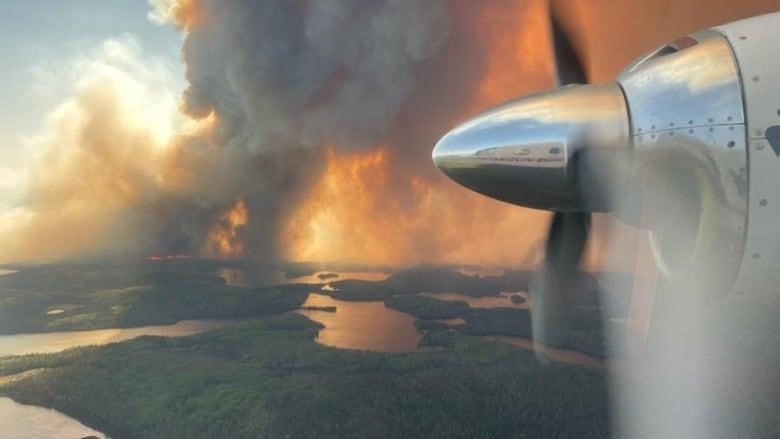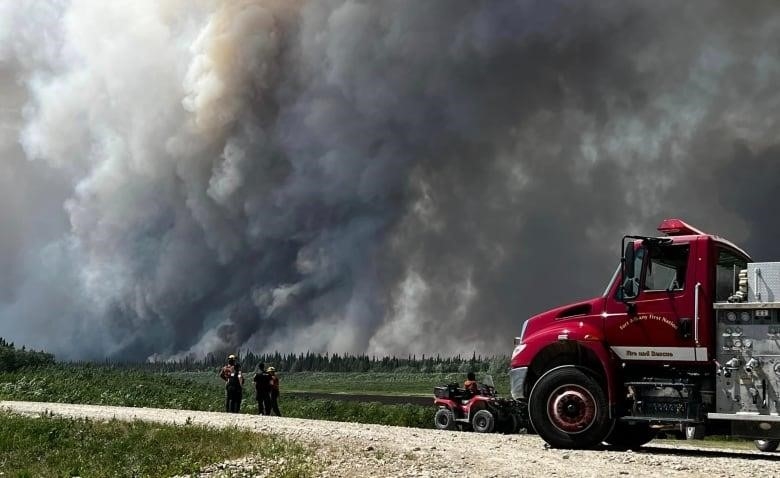
Officials say that if the fire gets closer to the power line, electricity would be cut to three James Bay communities
Fort Albany is still being forced to leave because a wildfire is still burning out of control dangerously close to the town on the James Bay Coast in northern Ontario.
About 500 people who had to leave Wednesday when the fire spread toward the First Nation were taken to hotels in Kapuskasing and Val Rita.
About 200 people are still in Fort Albany. On Thursday night, they started to be airlifted out.
Deputy Chief Terry Metatawabin says that one of the biggest worries right now is how close the fire is to the hydro line that brings electricity to Fort Albany and the nearby communities of Kashechewan and Attawapiskat.
“So the situation is still serious,” he said in a Facebook live video on Thursday night.
“So, we just want to ask you to pray for the firefighters who are fighting the fire right now so that the power line doesn’t get cut. We would have to turn off the power if it got any closer.”
Heavy smoke is still covering Fort Albany and the nearby Kashechewan First Nation. Chief Gaius Wesley of the Kashechewan First Nation says that everything is “orange.”
He wants to get older people, children, and other people who are having trouble breathing out of Fort Albany without taking away planes that are needed to get people out.
We need many planes. We also need air support from the military to get our people out of our communities. And it’s moving very slowly,” said Wesley, adding that the federal and provincial governments are “doing the best they can” to help.

The Ontario Ministry of Natural Resources and Forestry has ground crews, water bombers, and a new heavy helicopter working on the 300-hectare fire near Fort Albany. However, the weather forecast continues to be bad for them.
“Temperatures are still expected to be well above 30 degrees, and we know that some places in the far north reached 45 degrees with the humidex in the last few days, which is pretty hot,” said Isabelle Chenard, a fire information officer.
“So that played a part in making the fire act more dangerous.”
